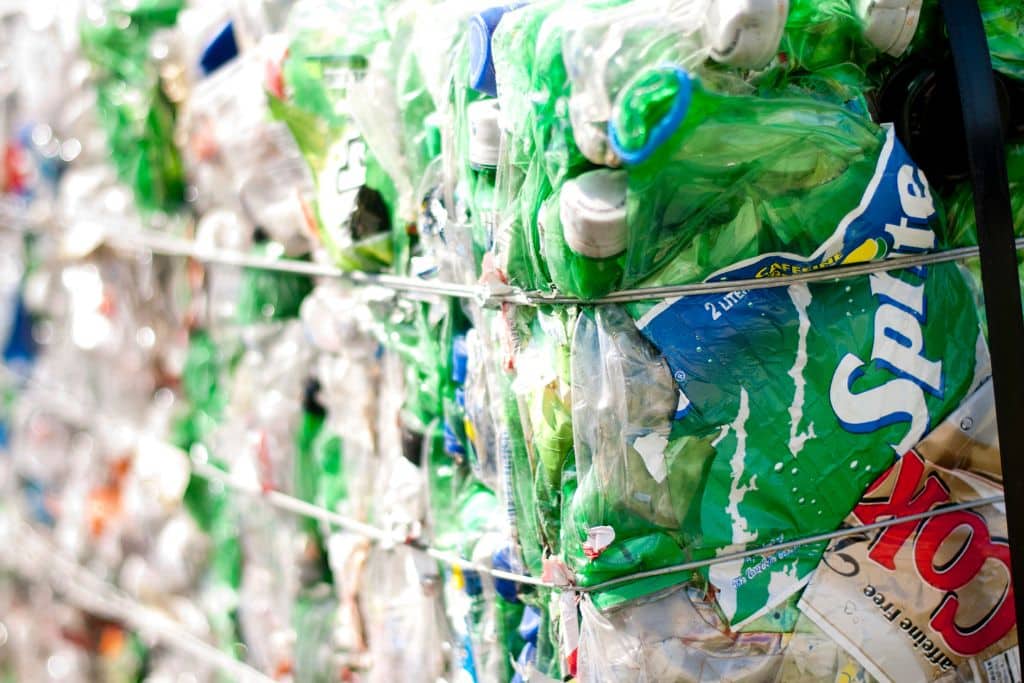Extended Producer Responsibility (EPR) policies aimed at raising recycling rates and shifting the financial burden of post-consumer waste disposal onto producers have been unable to stop the sale of difficult-to-recycle consumer goods.
—
In late 2020, investigative reporters unveiled a 50-year long disinformation campaign by the plastics industry which claimed that post-consumer plastics can be recycled into valuable new products. However, most of the estimated 600 billion plastic bottles and containers produced worldwide were never meant to be recycled.
The costs associated with recycling are considered prohibitive – plastics actually degrade during the recycling process and many cannot be reused more than once – though manufacturers found they could hide behind the ’polluter pays’ principle to avoid liability of their products’ detrimental effects on the environment and human health. Companies promoted the narrative that consumers are the real source of plastic waste and should pay to dispose of it, thereby shifting the responsibility of disposing 25 million tons of plastic bottles per year onto increasingly expensive, taxpayer-funded solid waste management systems.
While contributing to plastic pollution – with plastic clogging waterways, littering green spaces, and swirling about in the Great Pacific Garbage Patch – the global plastics industry has amassed $712 billion of value as of 2023.
Extended Producer Responsibility (EPR) policies are meant to address these kinds of market failures, offering a consumer-friendly reinterpretation of the polluter pays principle. EPR originated in a 1990 report by Swedish academic Thomas Lindquist, giving name to an emerging movement in Europe eager to shift more of the responsibility (and cost) of disposing end-of-life consumer goods away from overburdened public infrastructure and onto producers and manufacturers. Advocating for waste reduction, lower public spending, and innovative design by private enterprise in support of a circular economy, EPR has gained momentum worldwide as a tool to hold producers accountable for the costs and long-term consequences of their products.
You might also like: 6 Policies and Innovations Tackling Plastic Pollution
Where Is Extended Producer Responsibility Practiced?
Within higher-income countries, which are home to 16% of the world’s population and discharge 34% of the estimated 2 billion tons of solid waste created every year, the social pressure to be better stewards of natural resources coalesced with governments’ fiscal pressures to reduce the rising expense of processing and disposing of solid waste to move EPR policies into the mainstream. Where producers are compelled by the state to internalize a marginal amount of the external costs they place on the environment and public infrastructure by taking an active role in the collection, recycling, and final disposal of post-consumer products. EPR is also intended to provide incentive for producers to evaluate their entire product life-cycles, from design to fabrication, for opportunities to implement sustainable practices. Producers should be able to then reduce their own disposal costs by making their goods easier to recycle.

After Lindquist’s report, the first Extended Producer Responsibility scheme appeared in Europe in 1994 with the EU Packaging and Packaging Waste Directive (PPWD) targeting beverage companies. It then spread to Waste from Electrical and Electronic Equipment (WEEE), batteries, and durable goods made of easy to recycle components, successfully increasing recycling rates across Europe.
The upshot is the differing manifestations of EPR across European Union borders. Denmark, for example, leverages direct reimbursement contracts between producers and municipal waste handlers to help fund existing infrastructure. While in Belgium, producers have established not-for-profit Producer Responsibility Organizations (PROs) to manage obligations of its industrial members. This variation has led to a call for harmonization across the group to allow producers to avoid vastly differing requirements between jurisdictions.
In the US, EPR has been implemented at the state level, with 35 states and the District of Columbia (DC) approving regulations that extend disposal responsibility to producers, often for WEEE and environmentally toxic materials such as paints, batteries, and e-waste. In Japan, the 2001 Home Appliance Recycling Law (HARL) made it mandatory for manufacturers to recycle common household appliances such as washers, dryers, and air conditioners. By 2021, appliance recycling rates were above 70% and reached 92% in the case of air conditioners and laundry machines.
To address the rise of WEEE and e-waste, a number of developing countries have resorted to EPR-inspired regulations that require producers to build and run their own waste management infrastructure. Filling a gap within many lower-income countries where processing post-consumer goods for recyclable materials is difficult, heavily manual, and undertaken by poor, informal workers who are exposed to hazardous pollutants used in the extraction process. New laws and state subsidies have spurred local technology manufacturers, such as TCL and Changhong in China, to develop national systems for recycling e-waste, while Western multinational companies have sought efficiency through joint operations, as HP and Apple did in establishing the Vietnam Recycling Platform.
You might also like: What Is E-Waste Recycling and How Is it Done?
What Are the Limitations of EPR?
While EU member states and other developed countries continue to expand the purview of their EPR policies in support of a circular economy – e.g., starting in 2025, EU countries can begin to require textiles to be fully circular – consumer goods producers continue to design, manufacture, and sell products that cannot be recycled. Producers exploit gaps in regulatory coverage and the inability of state-level EPR to reach beyond political boundaries, effectively allowing unprocessed waste not covered by transnational agreements such as the Basel Convention on the Transboundary Movements of Hazardous Wastes and Their Disposal to be transported and dumped in countries with either more lenient or non-existent regulations. This “waste haven” effect became painfully clear to developed countries in 2017 when China banned imports of 24 types of post-consumer solid waste, forcing many countries to scramble to find new places to send it. In many cases, they did not, and recyclables ended up being incinerated or sent to landfills.
Developing countries also suffer from the widespread sale of consumer products that are difficult to recycle. In the case of sachets – hand-sized, single-use plastic pouches containing inexpensive, micro-portions of households products sold by multinationals to low-income consumers – they have become a serious environmental threat. Every year, 855 billion sachets – each made of several layers of plastic bonded together and requiring expensive, technologically sophisticated equipment to recycle – are sold to poor consumers who lack access to any recycling infrastructure at all.
EPR rules in their current form are fragmented, uncoordinated, and fail to prevent the continued production and sale of non-recyclable and difficult-to-recycle goods to consumers, without consequence to the manufacturers. Current EPR legislature allows companies to avoid the sins of the past, leaving post-consumer waste that was sold and dumped in years prior as an ongoing concern, especially as plastics can take centuries to degrade. This translates into substantial amounts of post-consumer goods that continue to pollute fragile ecosystems and jeopardize the health and wellbeing of the environment.
More can be done. For example, we should leverage existing frameworks, such as the EU’s Ecodesign for Sustainable Products Regulation (ESPR), to require producers to improve product life cycles instead of relying on EPR to incentivize voluntary sustainable practices. We should also go beyond the ESPR’s focus on energy efficiency and targeting recyclability of the end products. From concept to end-of-life, producers should design goods that reflect the realities of contemporary waste management systems across international borders.
Embracing the idea that if a consumer product cannot be recycled or reused at the end of its life, then it should probably not be sold at all.
You might also like: 4 Smart Waste Management Solutions That Are Revolutionising the Industry


















